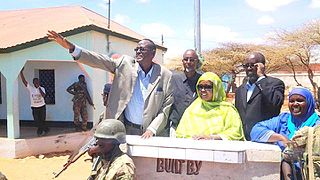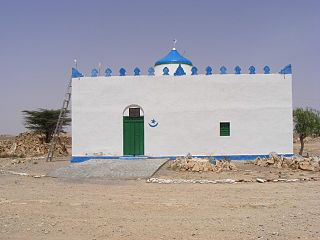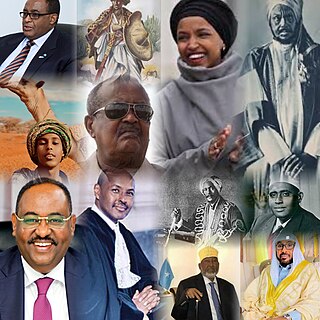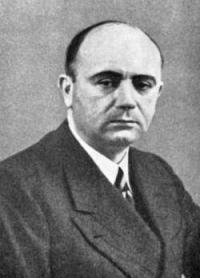This article needs additional citations for verification .(October 2022) |
The Bicidyahan (Somali : Reer Biciidyahaan) [1] is the nickname of Ali Ibrahim Jibra'il, a Majeerteen sub-clan.
This article needs additional citations for verification .(October 2022) |
The Bicidyahan (Somali : Reer Biciidyahaan) [1] is the nickname of Ali Ibrahim Jibra'il, a Majeerteen sub-clan.
The Bicidyahan is a sub-clan of the Majeerteen clan family, within the larger Harti clan and thereafter the Darod clan. Its members inhabit the eastern Ogaden region of Ethiopia and are primarily found in and around the Wardher Region zone. They also have a large presence in Mudug and Jubbada Hoose, specifically in the cities of Galkayo and Kismayo. Reer Bicidyahan [2] is a nickname for people descended from Ali bin Ibrahim ibn Jibril
There is no clear agreement on the clan and sub-clan structures and many lineages are omitted. The following listing is taken from the World Bank's Conflict in Somalia: Drivers and Dynamics from 2005 and the United Kingdom's Home Office publication, Somalia Assessment 2001. [3] [4]
The Bicidyahan sub-clan trace their origins back to a late 16th century ancestor, Cali Ibrahim, who is buried in the present day Qandala District of Bari, Puntland. In the mid 17th century, the Bicidyahan sub-clans began to migrate away from their homeland and started an expansion campaign from the Bari region, spearheaded by their then Sultan,.Governed b Sultan Cali baale.
By the late 17th century, the Bicidyahan had crossed Nugaal into Mudug, joining the southern Majeerteen sub-clans of Idigfacle, Gumasoor, Amaanle and Abdalla Nolays. The southern Majeerteen at the time were locked into a bitter never ending war with a group of pagans whom they called the "Galla Madow" meaning the "black infidels". When the Bicidyahan arrived, the Galla Madow had the upper hand over the Majeerteen and controlled most of the water wells in the region. The pagans main well and source of their pride was called "Baraxley" in what is now Gaalkacyo. [5]
With the arrival of the Bicidyahan, the southern Majeerteen's ranks swelled and they elected the grandson of Sultan Adan Yonis, Sultan Farax Cismaan Adan, to lead them against their pagan adversaries. In the early 18th century, Sultan Farax led many campaigns into the pagan heartland, the most famous being the "raid of the Galla-eri" (pagan expeller) that brought an end to the war. [6]
After a long stalemate the pagans still remained strong in their remaining settlement of Baraxley. Enrico Cerulli narrates in his book 'Somalia: Storia della Somalia. L'Islām in Somalia. Il Libro degli Zengi' that the Galla would boast about their land and abundance of livestock, singing in Somali:
"If from Baraxley I go up to the White hill,
If my flock disperses, I do not know [otherwise] of hunger and do not fear it" [7]
Cerulli would then go on to further state:
"The Majeerteen having tried in vain to drive the Galla off that land in various expeditions, they finally resorted to a stratagem: they cut a large number of cowhides into long strips; each knight had a certain number of these stripes which were tied to the tail of the war horses; then the group on horseback launched by surprise, during the night, a great gallop against the Galla. These, frightened by the strange noise that the strips of skin dragged by the running horses made echo in the great plain, believed they were attacked and ran away, abandoning their base" [8]
After this final battle, the fleeing Galla were hacked down and Sultan Farax Cisman was henceforth given the nickname of Gallaeri(expeller of pagans), a name that survives within the Bicidyahan sub-clan that descend from him.
In the ensuing century, the Bicidyahan would expand into the Geladi and Wardheer pasturelands, putting them into direct conflict with a number of tribes. This culminated into open war when their then allies, the Marehan were attacked in Geladi during the late 1870s. The Italian book 'Rassegna italiana politica letteraria' provides a brief synopsis of the event, stating:
"About seventy years ago, a group of Ogadèn pushed back as far as Gorof, in the territory of Galàdi, with the intention of raiding the Marrehan cattle and gathered there for the abundance of pastures; but they were driven back, although the Marrehans suffered severe loses and their leader Gogge Mahmud Nur himself fell.
In revenge for the Merrehans, Rer Bicidyahan and Omàr Mahmud, chased the Ogadén and inflicted on them such a defeat at the wells of Wardheer that the Ugas or head of the Ogadèn Fara Addò also fell – the survivors sheltered in Gorrahèi to not be exterminated.
The following year, the Marrehan and the Majeerteen at the Gherlogubi wells surprised a group of Rer Abdulle who had come to water their cattle; They attacked, killing many, and plundered the whole herd. Other clashes took place in Ghebdè. Dillimbash and Dahadid. There the Ogadèn, still armed only with sidearms, suffered bloody losses by the Majeerteen and Marrehan who for the first time used firearms, obtained by the Sultan Yusuf Ali.
Since then the Majerteen never abandoned the wells of Wardheer and the neighboring ones, and the Ogadèn never tried to return there." [9]

The Majeerteen, alternately known as MohammedHarti, are a Somali sub-clan part of the Harti branch of the Darod clan. Traditionally, they inhabit extensive territories in the Bari, Nugaal, and Mudug regions of Somalia, spanning from Bosaso to Garacad, mainly in Puntland state. Additionally, Majeerteen populations are present in southern towns such as Kismayo.

The Habar Yoonis alternatively spelled as Habr Yunis is a major clan part of the wider Isaaq clan. As descendants of Ismail bin Sheikh Isaaq, its members form a part of the wider Habar Magaadle confederation which constitutes the largest sub-clan of the Isaaq.
The Arap or Arab clan is a major Northern Somali clan of the wider Isaaq clan family. The Arap predominantly live on the middle and southwest side of Hargeisa and in the Baligubadle district Hawd region) of Somaliland, with its capital Baligubadle being an exclusively Arap territory. The territory of the clan extends to Ethiopia, in the area of Faafan, Gursum and Dhagahle. The Abdalle Arab, a sub-clan of the Arap clan is based in the Togdheer, Sahil. The Celi Arab, a sub-clan of the Arap clan is based in Maroodi Jeex Hargeisa Muuse celi arab living also Bakool South West State of Somalia Rabdhure Elbarde, They also live Fafan Zone Gursum, Somali Sheekh cismaan Arab based in Nogob Zone Jarar Zone regions.

The Leelkase or Lailkase or Lelkase is a major subclan of the Tanade Darod clan. The term "Leelkase" is a nickname, which translates as "farsighted, mindful, smart or intelligent”

The Darod is a Somali clan. The forefather of this clan is Sheikh Abdirahman bin Isma'il al-Jabarti, more commonly known as Darod. The clan primarily settles the apex of the Horn of Africa and its peripheries, the Somali hinterlands adjacent to Oromia (Ogaden), and both sides of the Kenya–Somalia border. The Darod clan is the largest Somali clan family in the Horn of Africa.

The Habr Garhajis also contemporarily known as the Garhajis is a major clan of the wider Isaaq clan family. They are the traditional holders of the Isaaq Sultanate and Habr Yunis Sultanate since the 18th century. As descendants of Ismail bin Sheikh Isaaq, its members form a part of the Habar Magaadle confederation, and they constitute one of the largest sub-clans of the Isaaq. The Garhajis are divided into two major sub-clans: the Habr Yunis and Eidagale. They are traditionally nomadic pastoralists, merchants and skilled poets.moreover they are one of the most feared tribes in the Somali peninsula pushing deep into the Ogaden territory in Ethiopia and the Warsangali in eastern Sanaag region.

The Marehan is a Somali clan, which is part of one of the largest Somali clan families, the Darod.
The Hawadle are a Somali clan who trace descent to Meyle, one of the sons of Irir Samaale. The Hawadle, as well as many other Somali clans stem from Samaale.

The Osman Mahmoud, are a Somali sub-clan part of the Majeerteen Harti branch of the larger Darod clan. The sub-clan has a rich tradition and history which include the sultanates of Majeerteen and Hobyo.
The Reer Nuur, also known as Nuur Yoonis, is a northern Somali clan, a sub-division of the Makahiil sub-clan of the Gadabuursi clan family.

The Hiraab clan, is a prominent Somali clan belonging to the larger Hawiye clan. Renowned for its influential role, the Hiraab clan has produced numerous significant leaders within Somalia, including six presidents, the first president and prime minister of Somalia, and various other prominent figures. The clan's historical contributions include pioneering military leadership roles, and establishing a foundational influence in Somalia.

Enrico Cerulli was an Italian scholar of Somali and Ethiopian studies, a governor and a diplomat.

The Karanle are a Somali clan, forming one of the six branches of the larger Hawiye clan. The Karanle are geographically spread out across three countries: Somalia, Ethiopia, and Kenya. Among all of the Karanle inhabited regions of the Horn of Africa, Ethiopia is the where the majority of the clan reside. In Ethiopia, the Karanle are mainly found in Harar, Hubat, and Babile but they also inhabit the Somali Region, Dire Dawa and surrounding regions. The majority of the Karanle Sub-clans predominantly reside in the regions of Ethiopia where the Somali population is predominant, with the exception of the Murusade Sub-clan, who reside in central and southern Somalia.
Garad is a term used to refer to a king, Sultan or regional administrator. It was used primarily by Muslims in the Horn of Africa that were associated with Islamic states, most notably the Adal Sultanate.
The Makayl-Dheere also known as Makaahiil-Dheere (Makayldheere), is a northern Somali clan, a sub-division of the Makahiil sub-clan of the Gadabuursi Dir clan family.
The Musa Abokor is a Somali clan, and a 2 major sub-division of the muuse sh isxaaq clan of the Isaaq clan-family.
The Sa'ad Musa or Saad Musa is a northern Somali clan. Its members form a part of the Subeer Awal sub-clan of the Isaaq clan family. The Sa'ad Musa traditionally consists of nomadic pastoralists, coastal people, merchants and farmers. The clan inhabits Somaliland, including Maroodi Jeex, Awdal and Sahil as well as Djibouti, the Somali Region of Ethiopia, Kenya and Tanzania.

The Farah Garad or the Garad Farah is a Somali clan which is part of the Dhulbahante clan-family, a sub-division of the larger Harti/Darod clan. The Farah Garad are divided into two sub-clans — Yassin Garad and Abdalla Garad. Abdalla has four clan eponyms, Ahmed Garad, Mohamed Garad (Baharsame), Guled Garad (Barkad) and Ali Garad. They are largely significant in Sool and Togdheer regions of Somaliland, and Dollo Somali region of Ethiopia.
The Omar Mahamoud is a Somali sub-clan, part of the Mohamoud Saleeban, itself a sub-clan of the Majeerteen sub-clan of the Harti conglomeration of Darod clans. The Omar Mohamoud is one of the largest Majeerteen sub-clans. The Omar Mohamoud clan primarily inhabit the Mudug and southern Nugaal regions of Puntland in northern Somalia. a large number of the clan settle in Doollo region of Ogadenia, as well as in the port city of Kismayo and the Lower Juba region of southern Somalia.
Garad Hirabu Goita Tedros Ali Al-Somali, widely known as Garaad Hirabu, was a Somali military commander and general that served the Adal Sultanate. He held a distinguished position as one of the preeminent generals within the historical tapestry of the Adal Sultanate. Renowned as the commanding figure of the Somali forces. He steered one of the three pivotal fronts during the ambitious campaign for the conquest of Abyssinia. Notably he shared a familial bond as the cousin of Imam Ahmed, assuming the role of his trusted confidant.